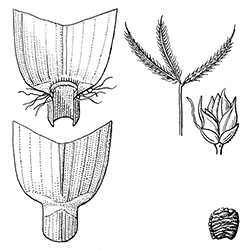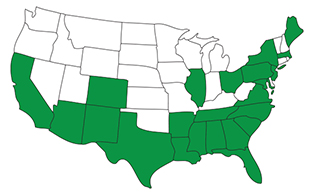

Egyptian Crabgrass
Dactyloctenium aegyptium
Egyptian Crabgrass is a summer annual grassy weed that is also known as Crowfootgrass, Durban Crowfootgrass or by its scientific name, Dactyloctenium aegyptium. This lawn weed is named for its crow's foot-like seed head.
Identify

Bunch

Membranous

Rolled
Egyptian Crabgrass can be identified as a tufted summer annual grassy weed that is yellow to green in color. This lawn weed spreads and roots at the lower nodes. Its ligule is short with hairs across the top, and its sheaths are smooth and compressed, with some hairs near the ligule. The leaves form with a row of hairs extending outward from the margin along the lower portion of the blade. Egyptian Crabgrass also features seed head spikelets arranged on two to five “fingers” radiating from a single point—this gives the appearance of a crow's foot, hence the name of this lawn weed: Crowfootgrass.
Life Cycle
This lawn weed prefers sandy areas that are disturbed or developed and can also be found growing in damp to moist soils. Egyptian Crabgrass thrives in humid subtropical climate zones, including much of the southern United States. These grassy weeds are also summer annuals, meaning they begin to grow (germinate) in the spring, mature in the summer and then produce seeds and die by the fall or first hard frost—an entire life cycle completed within 12 months.

Control
Egyptian Crabgrass can become an invasive grassy weed. Because it reproduces by seeds, it renders many cultural weed control methods—such as hand-pulling lawn weeds or proper watering and mowing—ineffective. Professionally applied herbicides are the best method to ensure complete weed removal.




Facebook
X
Youtube
Copy Link
Email